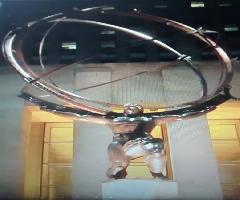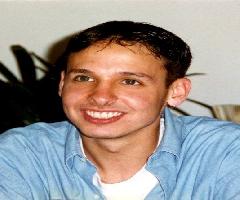If you wake up some morning and find 25 plastic flamingos on the front lawn, don’t worry, the local bird sanctuary isn’t changing its home address. Dubbed flocking by the planters, a note asking for a donation to the Avon Breast Cancer Walk would have been found among the perching. Demonstrating the creativity and dedication of the many groups across the country, over $350 million has been raised in the past decade in nine annual walkathons, including ours in New York City.
“We were out every night last summer moving flocks from one place to another,” says Donna Fornabaio of the
Pink Pearls of Pearl River, “and it turned out to be very profitable.”Carrying their creativity into the 2010 walk on October 16th and 17th, this Rockland County walk-team once again will hit Avon’s $1,800 per pair of feet minimum. “You feel like you’re doing your part, she says, “but you wish you could do more.”
But as arduous as the money part may sound, the 39 mile, two-day affair must really seem excessive. “I had the same question when I started here,” says Eloise Caggiano, program director of the walk in New York City since 2008.
Encompassed within a weekend, the timeframe allows walkers to do it without having to take time off from work, while the challenge helps give added meaning to the effort. “It’s pretty cool to say I walked a marathon and a half,” she says.
At the same time, as all those people are moving in mass, one key aspect of the event can’t help but be covered by the colorful inertia. Having four or 5,000 people walking the streets of New York City – wearing pink – talk about raising awareness, says Ms. Caggiano.
Considering the impact total awareness could have, it might be the most important component. “There are about a million people who don’t know they have breast cancer, and they are not getting treatment,” she says.
She would know because she was one of them in 2005. “I caught my cancer early,” she says, “and had I waited a year for a mammogram, it would have been a very different situation.”
Unfortunately, a lack of awareness isn’t the only thing that leaves all these people walking around in a lurch. With the epidemic of uninsured and underinsured, a good deal of Avon funding goes to clinics that provide free screenings.
Additionally, Avon understands the importance of funneling funds back into the communities in which the walkers are from. “What I see is that lower income people or people who don’t have insurance or are underinsured are now able to have mammograms,” says Pink Pearl Pat Sheehan of Blauvelt.
Of course, a diagnosis means little to those same people if treatment is not available. Funding hospitals and clinics, Avon steps in to make up differences as best they can and also provides patient navigator services so those in need can find free or affordable treatment.
Once again, Avon keeps the dedication of its walkers in mind when selecting beneficiaries. With a stringent grants process, which involves a scientific advisory board, she Ms. Caggiano, “We want people to feel very comfortable and confident that we are spending their money wisely.”
Included along side the necessary medical aspects are services that might be taken for granted in the face of survival. We may help provide transportation to treatment, meals for people who can’t afford it or offer caregivers to the children or elderly parents of patients, she says.
And if there is any doubt, Carmel Nardella takes solace and pride as checks are cut and handed out in full view of the 5,000. “You actually see where your money is going and when you hear the number,” says the Orangeburg Pearl, “it’s upwards of millions.”
On the other hand, getting it done – and the worn heals that prove it - is not solely confined to the two day marathon. Hitting the parks and tracks, says Ms. Nardella, “We start in early spring and we work our way up in mileage so it’s a huge commitment in terms of training.”
In it since 2001, Laura Neuendorf no longer trains for the walk. “I do crew,”
she says, but her role now is riding in the Avon sweep van to meet up with those whose feet have failed them.I help people who get hurt walking or we pickup walkers and bring them to rest stops, she says, but the bumps some hit in the road does not compare to the knowledge that a cure can’t come fast enough with so many not making it.
Nonetheless, she can’t put aside the kinetics that first drew her in as a spectator and continues as a walker. Giving off an electricity with so many wanting to make a difference, she says, “The energy is amazing.”
Ms. Nardella would call it transformative – especially upon sharing the sidewalk with those who’ve endured more than the obligatory shin splint. “When you see these young women out there that are survivors, it changes your life,” she says.
It would obviously be there same for the survivors themselves. “I learned so much about myself – what I’m capable of and how strong I could be,” says Ms. Caggiano.
She also has gone from being a very private person to wanting to share her story for the sake of others. She hopes the example of being able to speak up is a quality others can learn before bad news comes calling.
With different screening methods available, debate over when mammograms should begin and different body types and family histories, concerns are not something to be silent about. “The Avon Foundation firmly believes women need to talk to their doctors about all these issues,” says Ms Caggiano, and they shouldn’t wait for doctors to bring it up either, she adds.
Moving forward, today’s research is yielding a treatment that is a lot more custom made. “It’s more targeted therapy and more personalized for your specific case rather than treating everybody the across the board,” she says.
But back on track and against the backdrop of New York City, even people very familiar with the city are taken aback by the loop. “Being from New York and having lived here my whole life, it’s fascinating to me what you don’t see on a day to day basis. It is an amazing walk,” says Ms. Nardella.
Settling down after the 26.2 mile first day, Randall’s Island houses walkers who choose to bed down for the night in two man tents. There, they can get a hot shower, medical attention, a good meal and plenty of common conversation.
On the other hand, Rosemarie Caramanno of Stony Point felt strongly that this part of the affair satisfied her need to do something that involved sacrifice. Camping out in a tent under the Triboro Bridge, she said, is not exactly my cup of tea.
Overall, it adds up either way for her. “It makes you feel better about yourself that you’re doing good for others,” she says.
And toping everything off is a closing ceremony that is hard to put into words, according to Ms. Neuendorf. Thousands of people in pink, celebrating their stories – and millions raised – it’s just exhilarating, she concludes.
More Good Works
http://rmgoodworks.blogspot.com/


